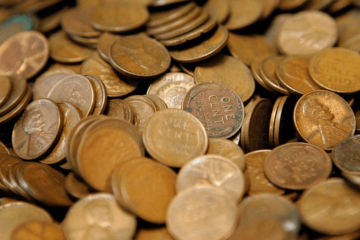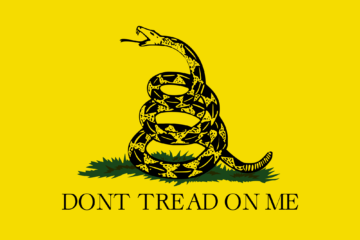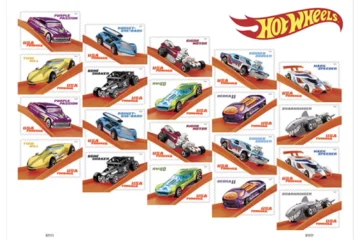Nickel Stacking: Zero-Risk Metal Investment
Nickel Stacking: A Beginner’s Guide to Zero-Risk Precious Metal Investment – Unveiling the Potential of America’s Five Cents
Key Points
- Nickel stacking, specifically focusing on modern and wartime nickels, can be a consideration for precious metal investors seeking a zero-risk investment with potential upside.
- Modern nickels (1946-present) offer a low-cost entry point into physical metal ownership, with a melt value exceeding face value due to rising copper prices.
- Wartime nickels (1942-1945) composed of silver alloy present a unique opportunity, boasting a significantly higher melt value than their face value.
- While not high-yield, nickel stacking offers portfolio diversification, protection against inflation, and potential numismatic value for certain key dates.
Takeaways
- Investors looking for a hedge against inflation and a way to own physical metal may find nickel stacking attractive.
- Understanding the difference between melt value and numismatic value is crucial for informed decisions.
- Careful storage and knowledge of key dates in modern nickels can enhance the potential returns from nickel stacking.
Nickel Stacking: A Zero-Risk Investment for Precious Metal Enthusiasts?
For precious metal investors, diversifying portfolios beyond traditional gold and silver can be an enticing strategy. While platinum and palladium offer unique advantages, their higher price points can limit accessibility. Enter nickel stacking – a potentially zero-risk investment strategy for accumulating physical metal at a low cost. This post explores the history of the US nickel, dives into the melt value of modern and wartime nickels, and analyzes the potential benefits and considerations for incorporating nickel stacking into your precious metal investment portfolio.
A Brief History of the US Nickel
The US nickel, a five-cent piece, boasts a rich history dating back to the 18th century. Early iterations were made of copper and silver alloys, with the first official nickel coin minted in 1866. The iconic “Shield Nickel” design featuring Lady Liberty dominated the scene until 1883, when the familiar “Liberty Head Nickel” was introduced.
The early 20th century saw the introduction of the Jefferson nickel in 1938, a design that continues to be used today (albeit with some minor modifications). However, World War II presented a unique challenge – a shortage of critical metals like nickel for wartime production. To address this, the composition of the US nickel was temporarily altered from 1942 to 1945, utilizing a silver alloy instead. These wartime nickels offer a distinct opportunity for investors, as we’ll explore further.
Understanding Nickel Melt Value
The melt value of a coin refers to the inherent value of the metal it’s composed of. This is a crucial concept for nickel stacking, as it establishes a baseline worth for your investment.
- Modern Nickels (1946-Present): Primarily composed of copper with a minor amount of nickel, modern nickels have seen their melt value fluctuate with copper prices. As of April 25, 2024, the melt value of a modern nickel sits around 6 cents, exceeding its face value of 5 cents. This shift is due to rising copper prices, making nickel stacking a potentially profitable strategy in the long run, especially considering the minimal initial investment.
- Wartime Nickels (1942-1945): Due to wartime metal shortages, these nickels were minted from a silver alloy, giving them a significantly higher melt value compared to their modern counterparts. On April 25, 2024, the melt value of a wartime nickel was around $1.54, a substantial difference from its face value. It’s important to note that wartime nickels can hold additional value for collectors due to their rarity, making them even more attractive for investors.
Nickel Stacking: Potential Benefits and Considerations
While not a high-yield investment strategy, nickel stacking offers several advantages for precious metal enthusiasts:
- Low-Cost Entry Point: Compared to gold and silver, nickels provide a highly affordable way to enter the physical metal ownership realm. This allows investors to accumulate a significant quantity of metal over time, potentially benefiting from future price increases.
- Hedge Against Inflation: As with other precious metals, nickel can act as a hedge against inflation. While its price fluctuations might be less volatile than gold or silver, nickel can still offer some protection against rising prices.
- Numismatic Value: While most modern nickels hold value primarily based on their metal content, some specific key dates or mint errors can hold significant numismatic value for collectors. Familiarizing yourself with these key dates can enhance your returns if you come across such nickels while stacking. Here are some examples of valuable modern nickels to look for:
- 1938-D Jefferson Nickel (First Year Issue)
- 1942/41 Overdate Nickel (Minting Error)
- 2004-D Nickel with Doubled Die Reverse
Considerations and Best Practices for Nickel Stacking
Before diving headfirst into nickel stacking, it’s essential to be aware of some key factors:
- Storage: Proper storage is vital to protect your nickel collection. Invest in airtight containers or tubes designed for coin storage to prevent tarnishing and damage. Improper storage can significantly reduce the value, especially for potentially valuable key dates.
- Liquidity: Selling a large quantity of nickels might take longer compared to selling more readily traded precious metals like gold or silver. Consider this when determining your investment timeline and potential need for quick access to cash.
- Transaction Costs: While the cost per nickel is low, buying and selling large quantities can incur transaction fees that can eat into your profits. Factor in these costs when calculating your overall return on investment.
- Numismatic Value vs. Melt Value: Always prioritize melt value for nickel stacking. While some key dates can be valuable, don’t rely solely on numismatic value for the bulk of your collection. Focus on accumulating a significant quantity of metal at a low cost.
- Legality: Melting US coins is illegal. Nickel stacking focuses on the inherent value of the metal within the coin, not melting it down.
Is Nickel Stacking Right for You?
Nickel stacking offers a unique opportunity for precious metal investors seeking a low-risk entry point into physical metal ownership. With rising copper prices pushing the melt value of modern nickels above their face value, and wartime nickels boasting a significantly higher silver content, nickel stacking can be a compelling strategy for portfolio diversification. However, it’s crucial to understand the limitations – nickel stacking is not a high-yield investment. It requires patience, knowledge of melt value versus numismatic value, and proper storage practices.
For investors seeking a way to accumulate physical metal at a low cost and hedge against inflation, nickel stacking can be a valuable addition to a diversified precious metal portfolio. Remember, thorough research, understanding market trends, and responsible storage are key to maximizing your returns from this unique investment strategy.


